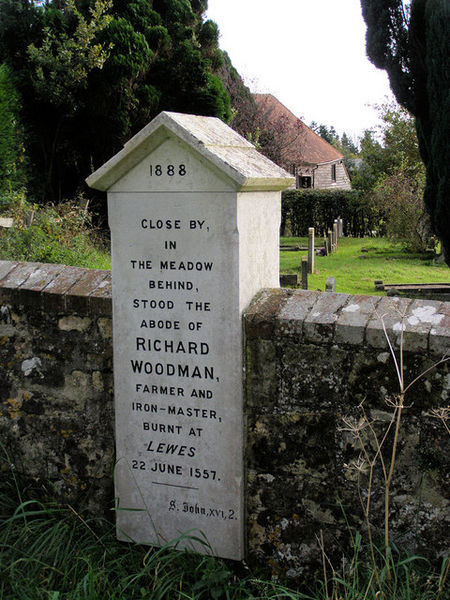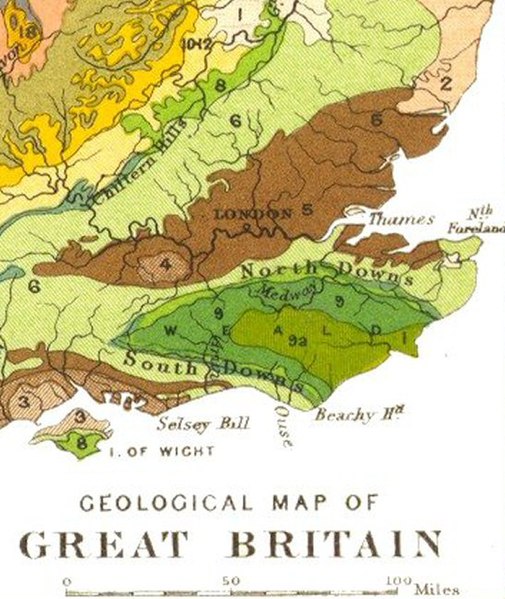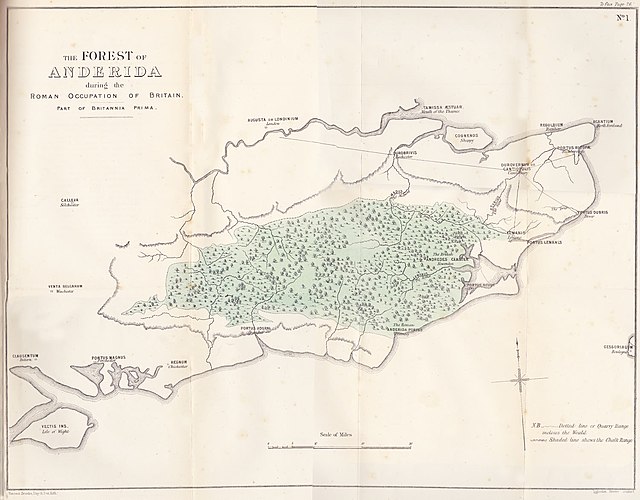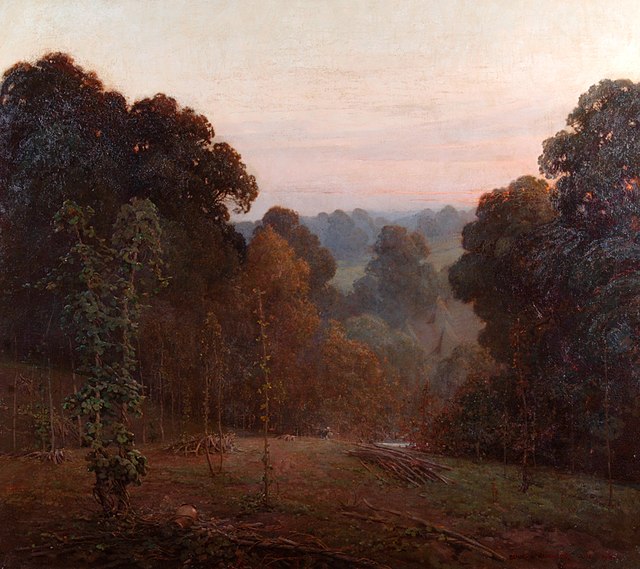The Wealden iron industry was located in the Weald of south-eastern England. It was formerly an important industry, producing a large proportion of the bar iron made in England in the 16th century and most British cannon until about 1770. Ironmaking in the Weald used ironstone from various clay beds, and was fuelled by charcoal made from trees in the heavily wooded landscape. The industry in the Weald declined when ironmaking began to be fuelled by coke made from coal, which does not occur accessibly in the area.
Cast iron railings for St. Paul's Cathedral, now in the Victoria & Albert Museum.
River Teise near Furnace Mill.
A moving model of a Wealden blast furnace based on Fernhurst furnace.
Richard Woodman was an ironmaster from Warbleton who was one of the 17 Lewes Martyrs burned during the Marian persecutions of Protestants during the 1550s.
The Weald is an area of South East England between the parallel chalk escarpments of the North and the South Downs. It crosses the counties of Hampshire, Surrey, West Sussex, East Sussex, and Kent. It has three parts, the sandstone "High Weald" in the centre, the clay "Low Weald" periphery and the Greensand Ridge, which stretches around the north and west of the Weald and includes its highest points. The Weald once was covered with forest and its name, Old English in origin, signifies "woodland". The term is still used, as scattered farms and villages sometimes refer to the Weald in their names.
View south across the Weald of Kent as seen from the North Downs Way near Detling
Geology of south-eastern England showing the High Weald in yellow-green (9a) and the Low Weald in darker green (9); chalk downland is in pale green (6)
The Forest of Anderida during the Roman occupation of Britain
Autumn, Weald of Kent (1904), by Benjamin Haughton








